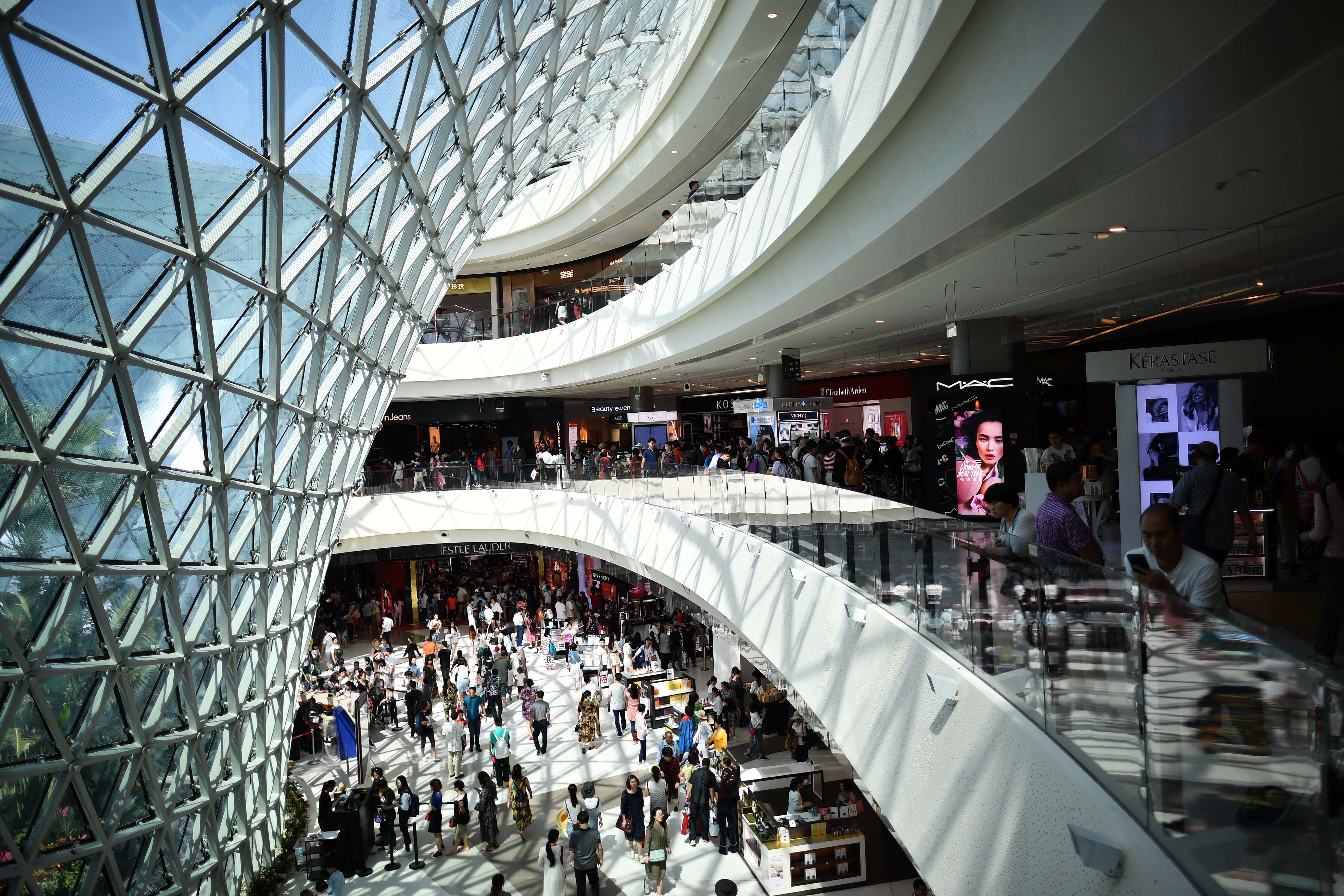Factors bolstering China's consumption will continue to generate results in the long-term
- By Rachana Gupta
 0 Comment(s)
0 Comment(s) Print
Print E-mail China.org.cn, May 18, 2019
E-mail China.org.cn, May 18, 2019

The Chinese government's decision to extend the May Day holiday from three to four days earlier this year triggered a consumption spree across China. The four-day break from May 1 to 4 not only brought good fortune to the tourism industry, which includes travel agencies, airlines, and railways, but also benefitted other businesses such as retail shops, restaurants, cinema theaters, and etc. Earlier this year, the government took this decision mainly to stimulate domestic consumption and to boost tourism across the nation.
According to the Ministry of Culture and Tourism, the revenue generated from tourism during the holiday period hit 117.67 billion yuan (US$17.48 billion), up almost 16.1% from last year's revenue. Also, during this period, a total of 195 million domestic trips were made, which was 13.7% higher than last year's figure. According to China's major online travel booking agency Ctrip, Chinese travelers booked tours to more than 90 countries. During this period, the bookings for first-class flight tickets also surged by 30% compared to the previous year's bookings during the same period. A similar upsurge was also seen in railway bookings during the holiday. A total of 60.41 million trips were made during the four days. The number of trips on the first day was 44.3% higher than the previous year's figure, according to the China Railway Corporation.
Clearly, the large consumption figure generated during the holiday season indicates the immense potential of the Chinese economy. This raises an intriguing question: What are the forces that are facilitating such a massive level of consumption? In order to understand this better let's take a closer look. In the last 40 years of reform, the nation benefited immensely from the gradual shift of its economy from a strict state-led model to the current model, which promotes private businesses and facilitates market incentives.
Currently, nearly 70% of China's GDP is from private firms. This stands in stark contrast to the situation in 1978, when private firms contributed virtually nothing to the national GDP. As a result of enhanced economic opportunities, rapid urbanization, and continued reforms, the size of the Chinese middle class has expanded substantially from just 19% in 1980 to 58% in 2017. According to current estimates, the size of China's middle class is almost 400 million and is still continuing to grow at a rapid rate. A projection by McKinsey & Company, shows that almost 76% of China's urban population will enter into the middle-income group by 2022, thereby providing further momentum to the growth of domestic consumption.
In addition, the recent Chinese government's decision to cut taxes to improve domestic demand has also started paying dividends. The market research firm, eMarketer, in its report earlier this year, highlighted that in 2019, retail spending by Chinese is projected to increase by 7.5% to cross US$5.64 trillion. In the U.S., the same figure stands at US$5.5 trillion, which will make China the largest retail market in the world.

Moreover, the gradual shift of China's economic model from an investment-led to one that is based on domestic consumption as a result of the government's push, is also playing a key role in accelerating the level of consumption. Notably, a report by the Chinese National Bureau of Statistics showed that the local consumption level in China was already the main driver of growth in the Chinese economy, contributing almost 76% to the country's economic growth in 2018, which is almost 18% higher than in 2017.
Furthermore, other factors such as the pervasiveness of smartphones, fueled by the higher internet penetration rate, is propelling the expansion of China's e-commerce industry, making it the world's biggest e-commerce market. As of December 2018, nearly 74.6% of the country's urban population had access to the internet, while the nationwide figure stood at 59.6%. According to eMarketer, e-commerce sales this year are projected to grow by 30% to reach US$1.98 trillion. The firm further projected that by the end of this year, China will have 55.8% of all online retail sales globally, and this figure is expected to exceed 63% by 2022.
Although the numbers look promising, there are still some uncertainties hanging over global growth, which could impact China in the short-term. Last month, the International Monetary Fund reduced its world's economic growth expectations from its previously estimated rate of 3.5% to 3.3%. However, in spite of the existing issues, China's contribution to global growth can't be neglected. This is highlighted in a recent Bloomberg report, which found that China's contribution to global GDP growth would increase from 27.2 % in 2018 to 28.4% by 2023. This makes China an indispensable driver of global job creation and improved living standards. Therefore, looking at the underlying factors, it looks likely that China's consumption level will continue to grow in the coming years, and it will continue to have a strong footprint on the global economy.
Rachana Gupta is an active blogger, poet and freenlance content writer.
Opinion articles reflect the views of their authors only, not necessarily those of China.org.cn.
If you would like to contribute, please contact us at opinion@china.org.cn.






Go to Forum >>0 Comment(s)